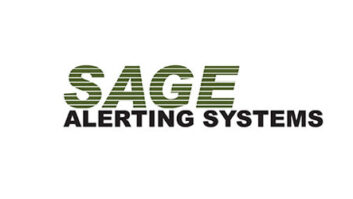You can find lots of similarities between the Q1 revenue report of iHeartMedia and those of other radio broadcasters. The big commercial radio groups continue to see traditional broadcast revenue trend downward while digital revenue grows, in some cases significantly.
iHeartMedia’s overall revenue increased $8.1 million or 1% in the period ending March 31 compared to the same period in 2024, totalling $807.1 million in the quarter.
iHeart reported a net loss for the period of $280 million. It posted a consolidated GAAP operating loss of $25.4 million in Q1 compared to $34.7 million in the first quarter of 2024.
Digital was again the shining star. Digital revenue increased $38.3 million, or 16%, driven primarily by continuing increases in demand for digital advertising, including podcast advertising.
Podcast revenue increased $25.4 million or 28% year over year to $116 million.
However, the Multiplatform Group, which includes the company’s 870 radio stations, reported revenue of $473 million, a decrease of $20.5 million or 4.2%, primarily thanks to uncertain market conditions. Excluding the impact of political advertising, broadcast revenue was down 3.4% YoY.
Specifically, station advertising revenue decreased $18.6 million or 5.2% YoY, driven by lower spot revenue. iHeart’s radio networks, which includes Premiere Networks and Total Traffic & Weather Network, saw revenue decline $2.6 million or 2.5%, according to a filing with the U.S. Securities and Exchange Commission.
Meanwhile, the company’s Audio & Media Services Group saw its revenue decrease $9.8 million or 14.2%, primarily as a result of nonrecurring contract termination fees earned by Katz Media in 2024 and a decrease in broadcast advertising from uncertain market conditions.
Chairman/CEO Bob Pittman told analysts on Monday he remains optimistic about broadcast radio and sees some momentum due to growing strength with national advertisers. Broadcast remains the top revenue-generating division for iHeart.
“Our Premiere Broadcast Networks revenue returned to growth in Q1 and was up 2.1% compared to prior year. We believe this is an important indicator of the growing strength broadcast radio has among national advertisers and evidence of the progress we’re making in returning broadcast radio to revenue growth,” Pittman said during a conference call with analysts.
The company’s broadcast radio stations have “more listeners than we did 10 years ago, so the audience side of broadcast radio is just fine.” He said that it’s “a monetization issue that broadcast radio is facing. It’s making the transformation from being a business that was sold as spots. And today, it’s moving to electronic and digital platforms.”
CFO/COO Rich Bressler said iHeart’s consolidated direct operating expenses increased 4.4% for the quarter. The increase was primarily driven by higher variable content costs associated with growth in the company’s digital business, including higher podcast profit-sharing expenses and third-party digital costs.
“(Expenses were) partially offset by a decrease in employee compensation costs in connection with our modernization initiatives taken in 2024,” Bressler said.
The company expects to cut $150 million in expenses this year as it continues its modernization efforts. So far iHeart has trimmed $27 million this year when measured against the same period a year ago.
“We remain committed to identifying opportunities across our organization to operate more efficiently and take advantage of new and evolving technologies like programmatic and AI, which are critical to delivering short-term results and long-term growth even during periods of economic uncertainty,” said Pittman said in a statement accompanying the Q1 report.
According to a slide in the investor presentation, cuts in the Multiplatform Group are expected to bring the largest cost savings, with the biggest savings coming through staff reductions.
Meanwhile, ad revenue in the second quarter so far is trending down. The company expects its second quarter revenue to be down in the low single digits compared to prior year. April pacing was down 2% compared to prior year.
The company reported $4.6 billion of net debt ending March 31. iHeart’s liquidity stands at $569 million with a cash balance of $168 million.
Analyst Aaron Watts of Deutsche Bank on Monday’s conference call asked Pittman about the recent change in ratings methodology by Nielsen and its impact so far. Nielsen has changed the time qualifier for a radio station to gain credit for an average quarter hour of listening from five to three minutes.
Pittman said “Nielsen is making a priority to try to capture all the listening that’s really happening.” He called it a step toward making Nielsen more representative and accurate.






